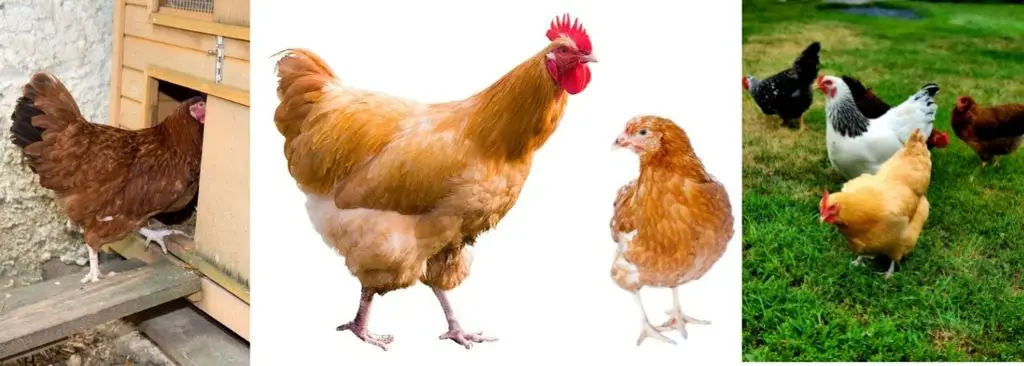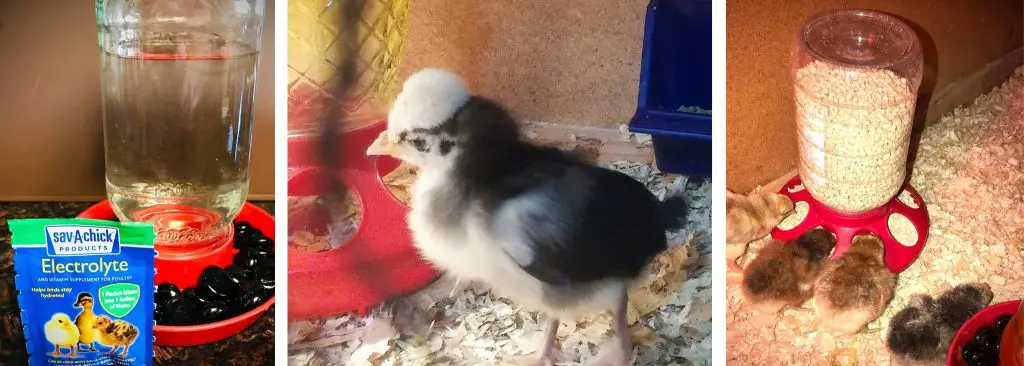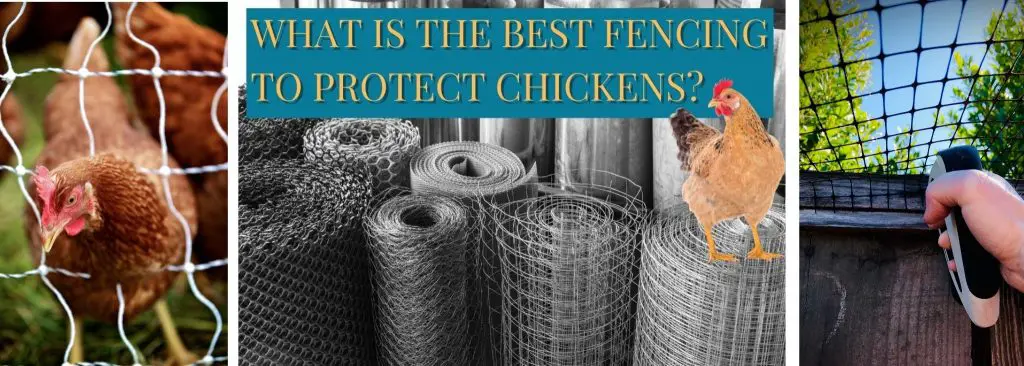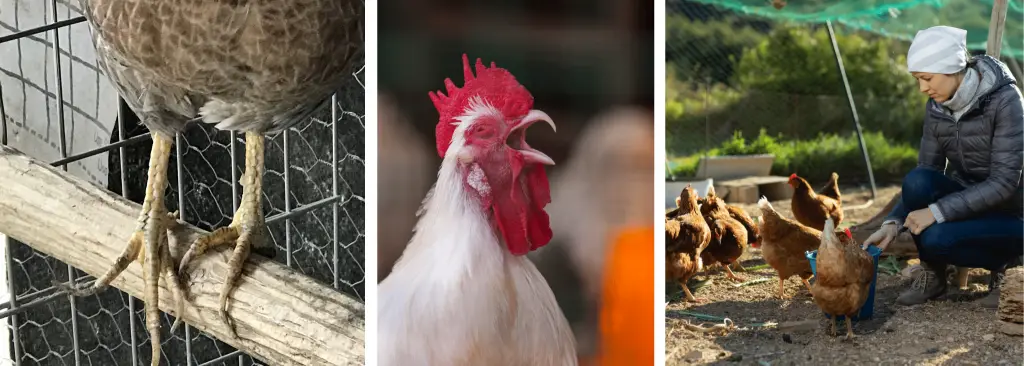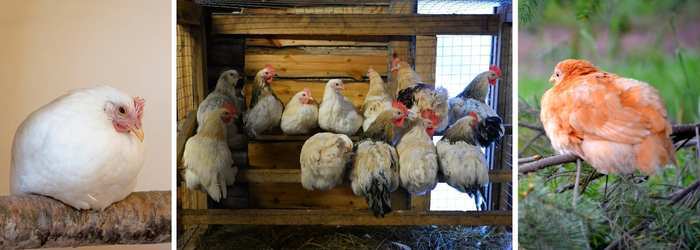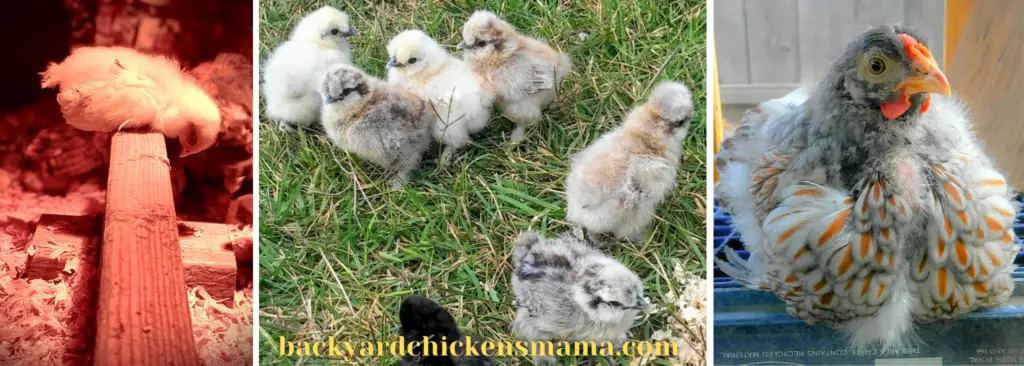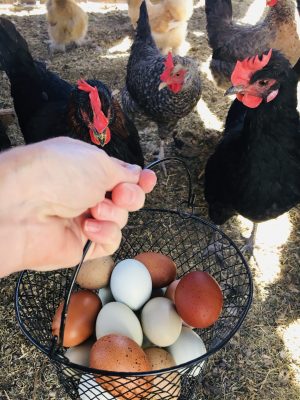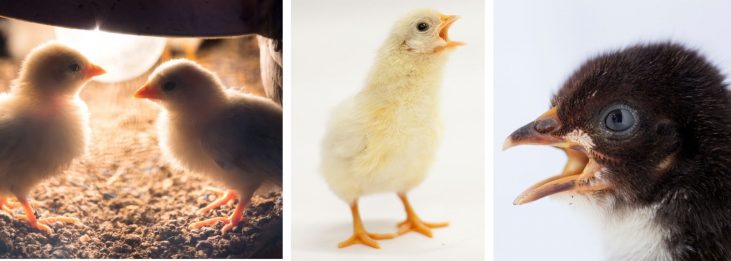
Whether you are a first time baby chick owner or have been raising them for decades, seeing and hearing a stressed baby chick can turn you into a worried mama hen! Do you know how to calm a stressed baby chick?
- Heat (Proper Temperature)
- Social Needs
- Proper Diet
- Water
- Safety
- Health
- Shelter(Proper Amount of Space)
- #1. Provide Proper Temperature for Chicks' Age
- #2. Make Sure Your Chick is With Other Chicks
- #3. Feather Duster as Surrogate Mother
- #4. Provide the Proper Diet for Your Chicks
- #5. Does Your Chick Have Access to Water all Day?
- #6. Provide Electrolytes for Your Baby Chicks
- #7. Housing-Protect Baby Chicks from Predators
- #8. Provide Bedding for Chicks to Peck and Scratch In
- #9: Provide a Dust Bathing Area
- #10. Roosting Bars or "Perches" for Chicks
- #11. Proper Space
- CONCLUSION: How to Calm a Stressed Baby Chick
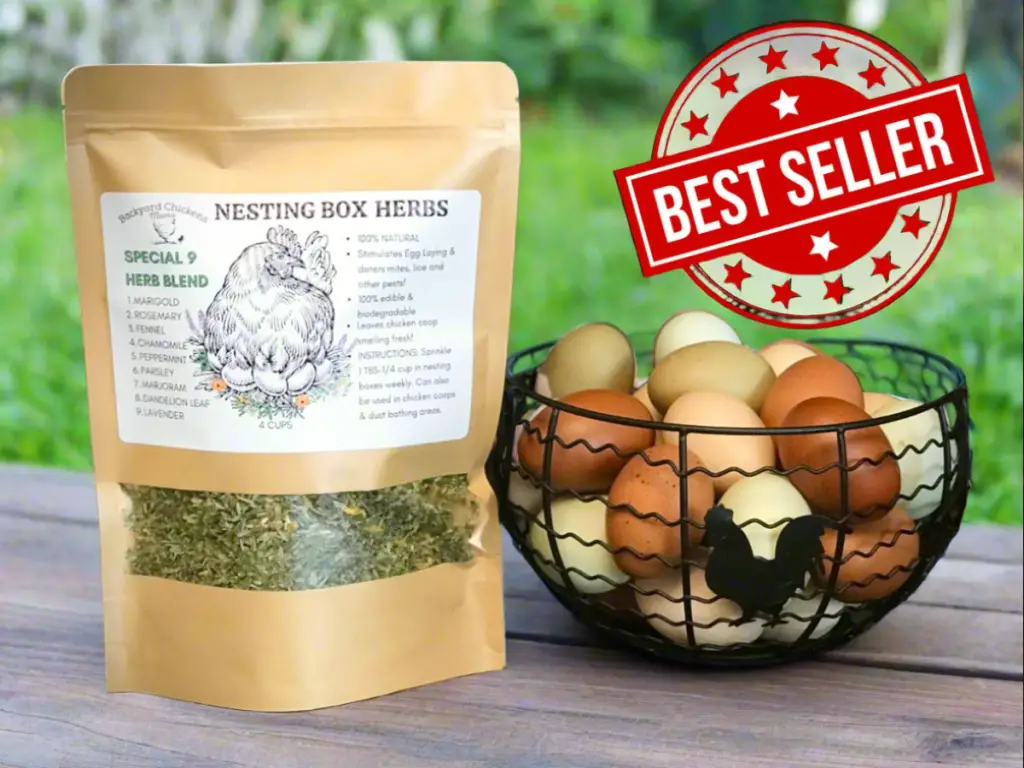
- Improves chicken health.
- Deters parasites: mites, lice, fleas & flies as well as mice, rats, raccoons, coyotes, opossums and more!
- On SALE!
- Shop: Nesting Box Herbs
#1. Provide Proper Temperature for Chicks’ Age
It is critical for a baby chick to maintain its body temperature. The first 6 weeks of a chicks life it is working on growing in its feathers to help maintain its body temperature.
Until a baby chick has its first set of feathers, it is up to you to provide a heat source for them. If they have a mama hen, she will do this for you.
- If a chick is not warm enough, it will let you know by a constant, distressed and loud chirping. Check to make sure that you are providing your chicks the proper temperature.
- A chick that is too cold may chirp loudly and try huddling together with other chicks.
- A chick that is too hot may get listless or pant with an open beak.
- If you are using a heat lamp, chicks that are too cold will be huddled together, directly under the heat lamp. Chicks that are too hot will be as far away from the lighting as possible.
- If chicks are too cold, either lower the heat lamp or add a 2nd heat lamp to the brooder.
- For chicks that are too hot, raise the heat lamp. This will cool the temperature.
- Chicks that are just right will be evenly dispersed throughout the brooder.
The following chart is the temperature that a baby chick needs provided in order to be happy, healthy and thrive:
| WEEK | TEMPERATURE FOR GROWING CHICKS |
|---|---|
| 1 | 95℉ |
| 2 | 90℉ |
| 3 | 85℉ |
| 4 | 80℉ |
| 5 | 75℉ |
| 6 | 70℉ |
#2. Make Sure Your Chick is With Other Chicks
Chicks are social by nature. They need other chicks to feel secure. Chicks like to eat, drink, dust bathe, perch and preen in groups.
Believe it or not, a chicken can actually feel “lonely” if they are not kept with other chickens. They actually do seek out companionship.
Chicks use each other to keep warm. This is especially helpful the first 6 weeks when chicks are working on growing in their first set of feathers.
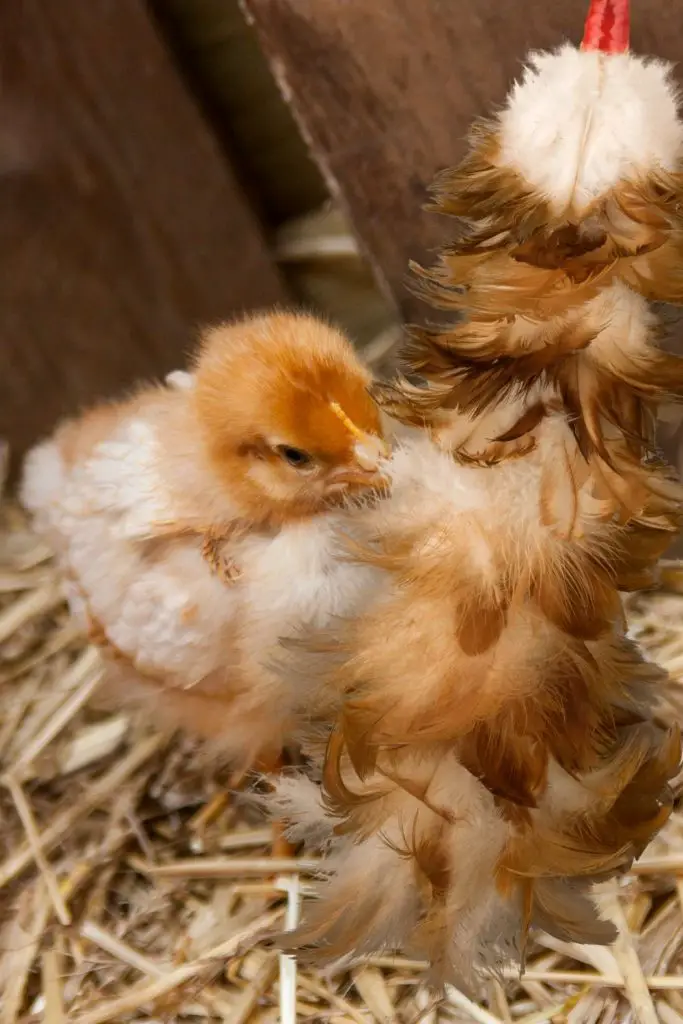
If you only have one baby chick, the best thing to do is to try to find another chick or two the same age and size to raise it with. (Never combine chicks of unequal size and age together.)
If you are unable to do this, add a feather duster to the brooder for the chick to cuddle up to. This can act as a surrogate mother for the baby chick.
#4. Provide the Proper Diet for Your Chicks
A chick that is hungry or not receiving the nutrients it needs is likely to be unhappy. They will show this by chirping persistently and loudly. If this goes on long enough, they may begin to become listless or ill due to lack of nutrients.
Young chicks should be fed either chick starter crumbles or mash feed until they are around 16 weeks of age or begin laying eggs. This comes in both medicated and non medicated varieties.
The medicated form of it contains Amprolium. Amprolium is a coccidiostat that helps to reduce the growth of the coccidia oocysts.
If your chicks are unvaccinated, the medicated feed is beneficial to give them the first few weeks of life to help them build up an immunity to coccidiosis.
If you add anything to a chicks diet other than its regular feed, it is important to also offer the chick grit. Chickens do not have teeth to chew food and grit helps them to digest feed that is not easily broken down.
#5. Does Your Chick Have Access to Water all Day?
A chick should have access to water 24/7 the first 6 weeks of life. Young chicks that are in brooders with heat lamps are also active at night and will eat and drink throughout it.
Make sure that you check your chicks water throughout the day and refill it with fresh water daily.
Chicks are good at kicking up bedding into their waterers. Clean it out as often as you need to. Just make sure they always have access to fresh, clean drinking water.
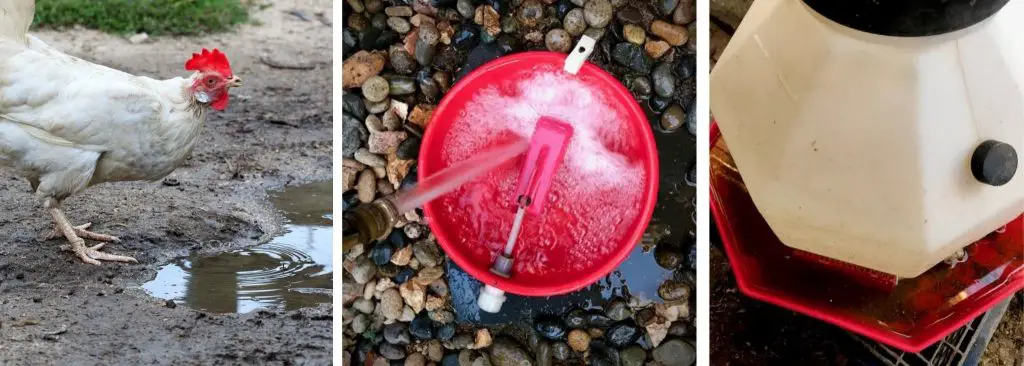
#6. Provide Electrolytes for Your Baby Chicks
Electrolytes are always good to have on hand when you own chickens, especially baby chicks. Stress and various illnesses can cause chickens to need a boost in electrolytes to get them through tough times.
Chicks can become stressed when they have a change of environment. This can happen when bringing them home from the tractor supply store, being transported in the mail or even just hatching out of the egg.
Electrolytes come in little powder packets that you add to their drinking water. I always add this to my chicks water for the first week after they are born. Let’s face it, hatching out of that egg was hard work!
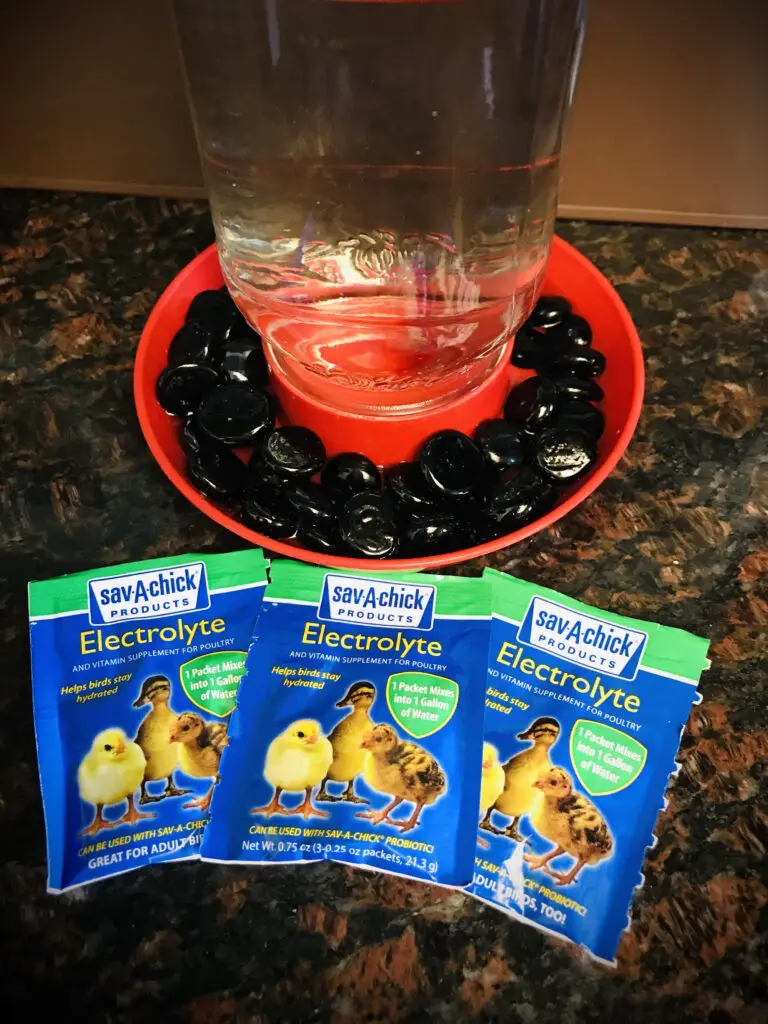
#7. Housing-Protect Baby Chicks from Predators
Chicks can become distressed quickly if they do not feel safe. This can happen for several reasons:
#8. Provide Bedding for Chicks to Peck and Scratch In
Chicks need bedding in their brooder. It not only absorbs poop and smell, but it also allows the chicks a medium to peck and scratch in.
Chicks and chickens will peck and scratch the ground to forage for food, sharpen their beak or communicate with other flock members.
Pecking and scratching the ground is an innate behavior that chickens do and if they are unable to do this(due to lack of space or bedding material.) this can lead to behavioral issues, such as aggression, pecking each other and even cannibalism.
- Pine Shavings
- Sand
- Straw/Hay
- Grass Clippings
- Leaves
- Shredded Paper
- Dirt
#9: Provide a Dust Bathing Area
A chick in its first week of life will lay down and kick pine shavings, dirt, hay, etc. on top of itself. This is called dust bathing and they do this to clean its feathers.
Dust bathing not only helps to keep a chicken’s feathers in pristine condition, but it also helps to kill mites, lice and other pesky parasites that attach at the base of feathers and to the skin.
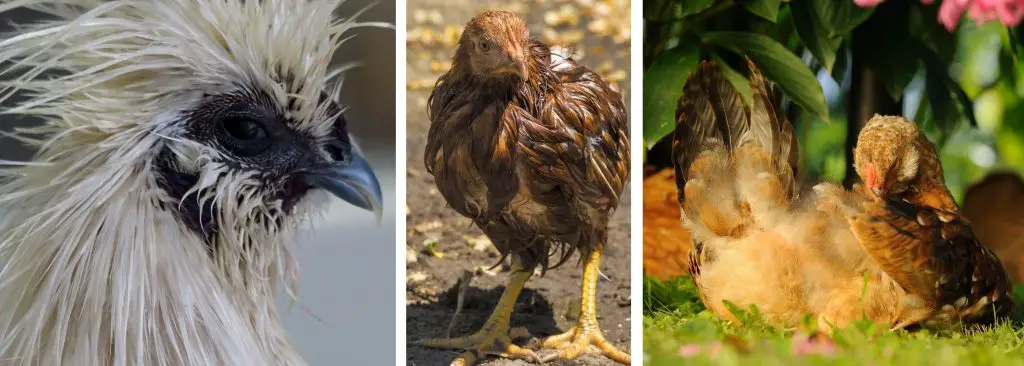
#10. Roosting Bars or “Perches” for Chicks
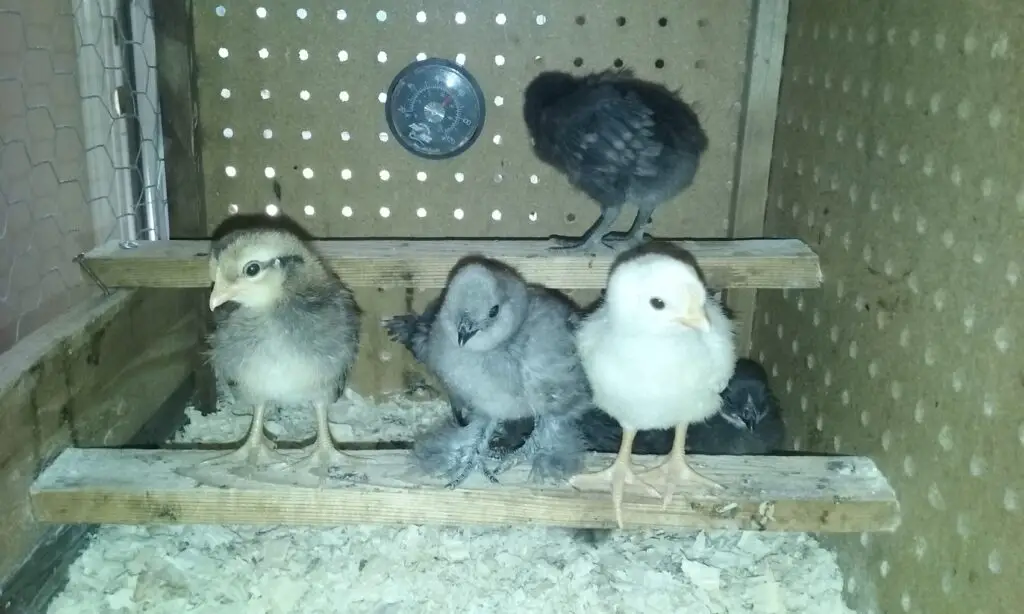
Even chicks in their first week of life will seek out a location off of the ground to roost or perch. They instinctively know that they are safer doing this.
Chicks as well as full grown chickens that roost up off the ground are less vulnerable to predator attacks from snakes, rats, mice, raccoons, etc. They are also less susceptible to developing parasites such as mites, lice and fleas.
Chicks that aren’t provided an area higher up to roost when they are resting will jump up onto their waterers and feeders to do so. This makes for very poopie waterers and feeders!
Roosting Bar Size
You can use branches from a tree or even a little 1″x2″ piece of wood. Just make sure that it is stable enough to support a chick when it jumps up onto it.
Roosting Bar Height
During a baby chicks first week of life, provide a little “perch” for them just a few inches off of the ground. As the weeks go on, you can gradually raise the perches/roosting bars up higher.
Full grown adult chickens should never have a roosting bar higher than 4 feet. Another roosting bar at the 3 foot level and 2 foot level should be provided for a chicken to jump down to. This will help prevent broken chicken legs and the development of “bumblefoot.”
#11. Proper Space
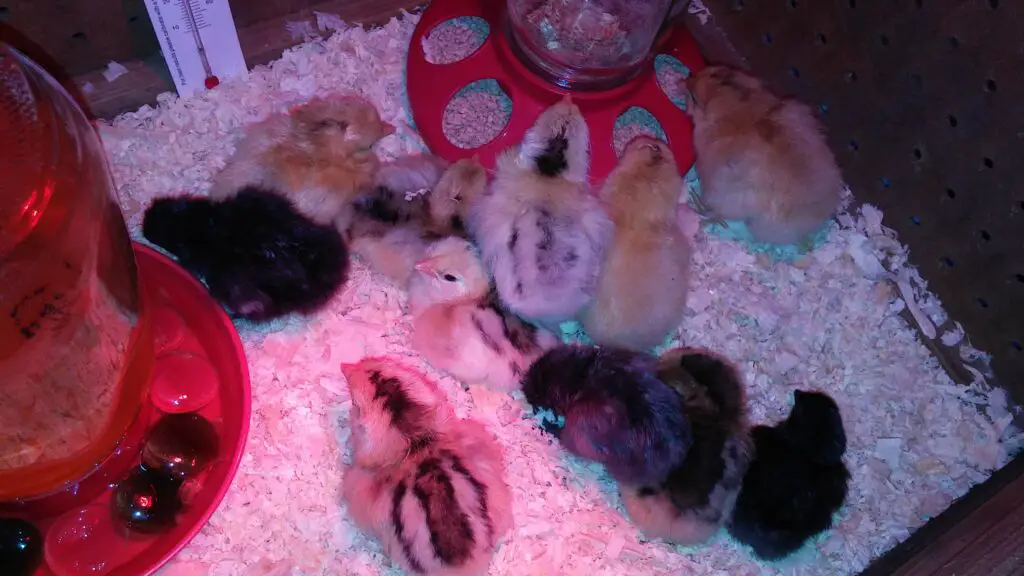
Chicks need sufficient space to be able to move about freely within the brooder. This is especially important so they can move closer or farther away from the heat source inside the brooder.
Chicks need to be able to peck and scratch the ground and sufficient space to be able to sprawl out and “dustbathe.”
Baby chicks that are not given proper space are likely to develop behavioral problems and are more likely to peck at each other.
Minimum Space Required for Baby Chicks in Brooders
Baby chicks 1-4 weeks of age require a minimum of 1/2 square foot of space per chick.
Chicks 5-8 weeks of age require a minimum of 1 square foot of space per chick.
| # CHICKS | MINIMUM SPACE REQUIREMENT UP TO 4 WEEKS | MINIMUM SPACE REQUIREMENT 4-8 WEEKS |
|---|---|---|
| 4 | 2 SQ FT | 4 SQ FT (2’X2′) |
| 6 | 3 SQ FT | 6 SQ FT (2’X3′) |
| 8 | 4 SQ FT (2’X2′) | 8 SQ FT (2’X4′) |
| 10 | 5 SQ FT | 10 SQ FT (2’X5′) |
| 12 | 6 SQ FT (2’X3′) | 12 SQ FT (2’X6′), (3’X 4′) |
| 14 | 7 SQ FT | 14 SQ FT (2’X7′) |
| 16 | 8 SQ FT (2’X4′) | 16 SQ FT (2’X8′), (4′ X 4′) |
| 18 | 9 SQ FT | 18 SQ FT (2’X9′) |
| 20 | 10 SQ FT (2’X5′) | 20 SQ FT (2’X10′), (4’X5′) |
CONCLUSION: How to Calm a Stressed Baby Chick
Raising baby chicks is a wonderful experience for the whole family to have!
Whether it’s your first time raising baby chicks or your 100th time, you will always worry about your baby chicks (like a mama hen) It’s perfectly normal to treat them like you are their mama. No one likes to see or hear a stressed baby chick incessantly chirping.
Just remember, as long as you tend to the following needs of your chicks, they should be happy, healthy and thrive!
- Provide the proper temperature for the baby chicks age. This changes weekly during the first 6 weeks.
- Always keep more than one chick. Chicks are social by nature!
- Use a feather duster as a surrogate mama hen if you find yourself with only one chick.
- Provide a proper diet.
- Fresh, clean water should be available 24/7.
- Have electrolytes on hand should a chick become stressed or ill.
- Protect your chicks from predators.
- Provide appropriate bedding.
- Provide a dust bathing area.
- Proper type and height for roosting bars/perches.
- Provide adequate space for your chicks.
How to Calm a Stressed Baby Chick– https://www.backyardchickensmama.com/how-to-calm-a-stressed-baby-chick/

